Thanks to Saint Jimmy (Russian American) for linking to this article, which definitely needs some discussion.
Click here for Exit the Cuckoo's Nest's posting standards and aims.
Click here to sign the People's Proclamation and send it to everyone you know.
Source: Simplicius The Thinker
The Iraq War Was A Sham
We mark the 20 year anniversary of the fraudulent Operation Iraqi Freedom by reframing it with a new, revealing historiography.
Since the start of the Russian SMO, many people have continued to speciously compare the US’s 2003 invasion of Iraq, called Operation Iraqi Freedom, with Russia’s efforts in Ukraine. Typically this revolves around demonstrating how much ‘demonstrably better’ and ‘superior’ the American forces were in promptly and efficiently defeating a major force, compared to Russia’s—by comparison—thus far ‘stagnant efforts’.
The typical shopworn tropes center on how US managed to establish ‘full air supremacy’ while Russia is unable to in Ukraine; how US seized Baghdad in a month, while Russia failed to seize Kiev; how US suffered comparatively few losses, while Russia’s suffering unprecedented casualties, etc.
The US invasion of Iraq, begun almost exactly twenty years ago, on March 20th, 2003, is often sold to us as a gloriously flawless campaign, where heroic US forces valiantly marched forward, vanquishing hordes of elite Iraqi Fedayeen numbering in the hundreds of thousands. Hollywood movies have continued to valorize, glamorize, glorify, and nigh beatify this ‘war’ despite souring public opinion which has, over the years, mostly reversed—and rightly so—the pedestaled image of the war into one of condemnation.
But there remains one important facet to the image that has continued to endure the test of time, despite the general acknowledgment these days that the war was an egregious mistake. And this facet is the actual view, the historiography of the war itself from a militaristic, rather than political or social, perspective. Despite acknowledging the war as a mistake, most people still vacuously adhere to the vision of the war as some resounding, exemplar achievement of military science par excellence.
But the wool’s been pulled over our eyes. Between the countless mischaracterizations and misattributions of ‘glory’ and tactical success, there are a few elephantine holes in the collective memory of what actually transpired, and in exposing these grand failings of the collective consciousness, we will actually shed a new light on, and reframe, how we might perceive the current Russian SMO—which Twitter armchair generals so often disparagingly and unfavorably compare to the Iraq War.
The War That Wasn’t
The most obvious thousand-ton elephant in the room must first be swiftly gotten out of the way:
There was no actual ‘war’.
You’ve read that right. The active conflict invasion stage of the ‘war’, dubbed Operation Iraqi Freedom, was infact a giant canard, a holographic Military-Industrial-Media-Complex projection—an abject Hollywood illusory fraud. In the parlance of the soldiers themselves who took part in it, it was called a ‘thunder run to Baghdad’—and for good reason.
What was once oft-discussed in those days, but is now conveniently buried in the memory-holes of American alt-history is the fact that almost every Iraqi general was paid off by the CIA and various US intelligence services to lay down their arms, along with the men under their command, and surrender.
At the time of the invasion in March 2003, many newspapers were rife with reports about this. Here’s an excerpt from UK’s ‘Independent’:
Senior Iraqi officers who commanded troops crucial to the defence of key Iraqi cities were bribed not to fight by American special forces, the US general in charge of the war has confirmed.
Well before hostilities started, special forces troops and intelligence agents paid sums of money to a number of Iraqi officers, whose support was deemed important to a swift, low-casualty victory.
Even the US Army Supreme Commander for the war effort, General Tommy Franks attested to the fact:
General Tommy Franks, the US army commander for the war, said these Iraqi officers had acknowledged their loyalties were no longer with the Iraqi leader, Saddam Hussein, but with their American paymasters. As a result, many officers chose not to defend their positions as American and British forces pushed north from Kuwait.
"I had letters from Iraqi generals saying: 'I now work for you'," General Franks said.
And here they admit that the bribing part of the operation was even more important than the purely kinetic aspect of the ‘war’:
"This part of the operation was as important as the shooting part; maybe more important. We knew that some units would fight out of a sense of duty and patriotism, and they did. But it didn't change the outcome because we knew how many of these [Iraqi generals] were going to call in sick," he added.
This article from the UK’s Independent paper peels back the layers of deception for us, and explains why Baghdad in fact fell without a fight at all:
The revelation by General Franks, who this week announced his intention to retire as commander of US Central Command, helps explain one of the enduring mysteries of the US-led war against Iraq: why Iraqi forces did not make a greater stand in their defence of Baghdad, in many cases melting away and changing into civilian clothes rather than forcing the allied troops to engage in bitter, street-to-street fighting.
UK’s ‘Express’ paper also reported on this at the time:
Resistance around the capital from six Republican Guard divisions just melted away because the senior commander of Saddam's elite troops defected and ordered his men to give up or go home.
Like something out of a Tom Clancy novel, the MI6/CIA teams even carried cold hard gold bullion in briefcases to effect the bribes:
The Joint Special Operations Task Forces have been operating undercover since before the war, contacting Iraqi military, intelligence and secret police leaders to make them change sides. The teams carried suitcases full of gold bullion, US dollars, Swiss francs and euros to buy off regime leaders, and threatened to kill those who refused to cooperate.
And a Salon article from late March 2003, on the eve of the war also lifted the lid on the secret, massive CIA effort to completely denude the Iraqi army of any resistance whatsoever. They go on to explain how, as bombs were already devastating Baghdad in the ‘shock and awe’ portion of the conflict prior to the full-on ground invasion, the Iraqi Defense Ministry headquarters was left standing. The reason was self-evident: the CIA had already established quite a rapport with the Iraqi military leadership, and was busy successfully bribing them to lay down their arms.
The Express article even calls it ‘the battle that never was’, and says that “US commanders have been unable to show any pictures of Republican Guard troops and their equipment destroyed in the advance.”
This was all corroborated in a series of ABC and NBC frontline documentaries, where embedded journalists rode along with the ground troops as they first incurred into Iraqi territory from Kuwait on March 20, 2003.
This segment at the 13:10 mark, for instance, highlights the correspondent embedded with the Marines during the initial advance stating, “the first Iraqi soldiers we saw had changed into civilian clothes, and were surrendering by the truckload.”
Then at the 17:20 mark of the video the correspondent reports: “Later that night, busloads of military age men fleeing Baghdad started surrendering at our position, 75 miles south of the capital.”
So, it can be seen that as the US armored columns leisurely drove along the highways, facing no resistance whatsoever apart from a few small instances of light-arms fire, they were met with a continuous deluge of Iraqi military forces simply driving up and surrendering to them en masse.
At 20:06, he says, “the roadside was littered with discarded uniforms, abandoned artillery, and trucks from an Iraqi Republican Guard brigade…”
As they approached the actual outskirts of Baghdad city itself, with the main Iraqi ‘regular’ army having long surrendered and fled, even the elite Republican Guards, tasked with protecting the city, were simply abandoning their equipment and running away without a fight. Of course, that’s generally what happens when your leaders and commanding staff are paid off with gold bullion bribes.
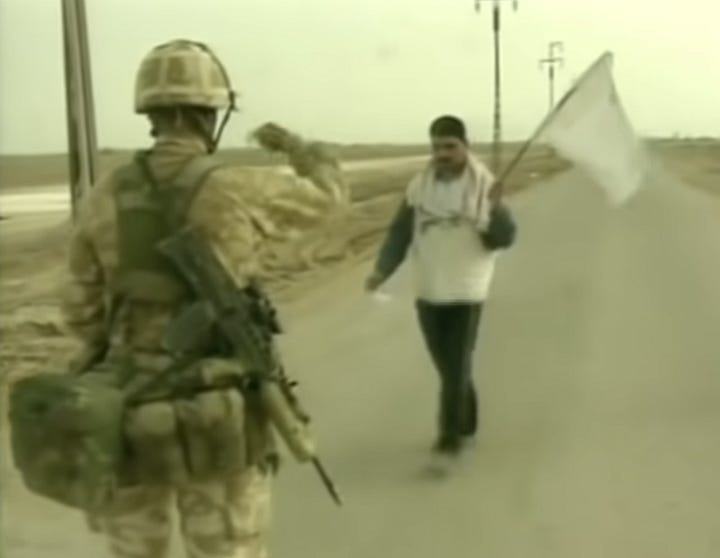
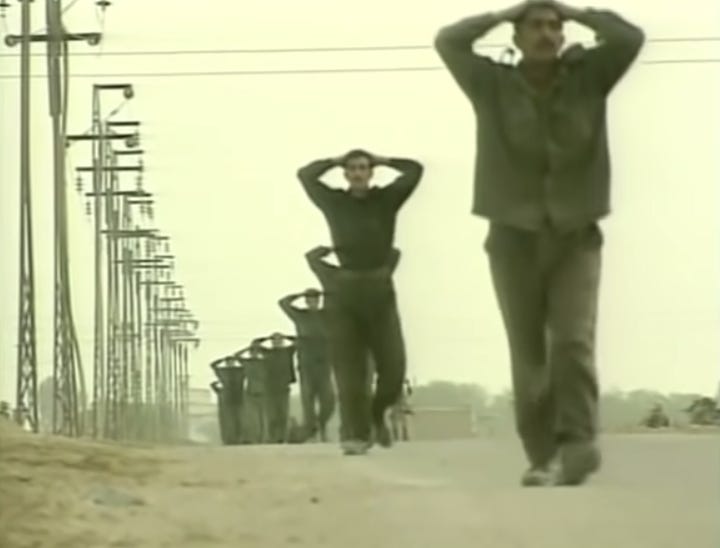
At 22:08 of this separate NBC documentary on the opening of the war, the correspondent reveals that “Iraqi soldiers were coming across the border” into Kuwait and surrendering to the US forces even before the US forces stepped foot into Iraq. Chip Ried of 1st Marine Division then adds, “The Iraqi’s started pouring in, hands up, ready to surrender.”
The fact that they were surrendering in droves long before the US forces even entered Iraq should come as a shock to the people who were inculcated on a two-decades long running narrative that this war was some sort of exemplary demonstration of military prowess, rather than a subversive intelligence service coup de grace. And how difficult could it possibly be to effect such a coup de grace on poor people in a third world country, when one has admittedly offered them briefcases full of gold bullion?
There was one small semi-battle (by real war’s standards) at the halfway mark, in the town of Al-Nasariyah against, once again, minor forces. Yet the battle lasted over a week, US had ~100 total casualties, including ~30 KIA, 60+ wounded and 6 captured, while Iraq had ‘359-431’ reportedly killed. That’s a rough 10:1 kill ratio, on par with what Russia achieves against the AFU, except that Russia does it against a force innumerably superior to the Iraqi forces in every way.
During the battle, a US logistics convoy was ambushed and American POW’s captured (as well as some killed), who were paraded on Iraqi TV. Sound familiar? Shown At 34:16 of the NBC video.
Remember how vehemently Russia was denigrated at the start of the conflict for having hapless-looking POW’s captured by Ukrainian forces?
Bumpy Ride
As the American columns continued to leisurely drive down the highways toward Baghdad, they faced the occasional light small-arms resistance. However, even with such paltry opposition, they were experiencing massive problems.
They go on to outline how the Marines continued driving into Iraqi territory for two weeks (with little to no resistance, mind you) in their AAV’s (Assault Amphibious Vehicle), which began to break down en masse:
(13:48 timestamp)
“The AAV’s were constantly breaking down,” says the anchor. “At one point, one third of the tracks were out of service. Vehicles designed to carry 15 Marines now regularly carried 24.”
So they lost a whopping, unheard of 1/3 of their vehicles in the first week or two of the road march just from systemic break downs? Where’s the outcry about the mighty ‘1st Army’? Remember the cries of Russian incompetence, lack of maintenance, poor army, etc., in the early part of the SMO? But the US, of course, gets a free pass for the same sins as Russia.
At 15:27 of the NBC Nightline special, they eve groan about how badly the supply situation deteriorated, the commander explaining how ‘nervous’ he got when they had to ration down to two meals a day for four days straight.
Here again, at 57:11 of the NBC doc, they describe completely running out of supplies during a sandstorm, where US troops were rationed down to 1 MRE per day, and almost no water. Sure, it was a bad sandstorm—but no worse than the equivalent bad ‘snowstorms’ and rasputitsa that Russia has had to endure repeatedly in Ukraine—and Russian forces never ran out of food to the point of rationing to 1 or 2 MRE’s per day.
In fact, this was a well known occurrence for US forces even back to the 1991 Gulf War conflict. A Washington Post article from March 2003 described the multitude of issues aggrieving the American forces during the march:
Some units only had hours of food left. Imagine if a Russian unit got down to hours worth of food—what type of global headlines of mockery would this prompt?
They go on to mention the systemic normality of this problem, highlighting how US ground forces virtually ran out of fuel on only day 3 of the 1991 hostilities.
And the issues didn’t stop there. Almost every conceivable circumstance which was the butt of both jests and mockery against Russian forces in the current SMO in fact first saw its fruition in the first week of the US conflict.
At 44:37 of the NBC documentary, they report an incident where a US servicemen ‘traitor’ threw a grenade into a command tent, killing and seriously wounding ~15 American officers. And this was in the famously elite 101st Airborne division. Remember the craven mockery and jollity with which they reported on made-up incidents about such attacks on the Russian side in the beginning of the SMO? The fake stories about Russian troops ‘liquidating’ their own commanders? It turns out they were merely trying to turn their own mirror onto Russia.
But that’s not even the worst of it by a long shot. At 1:08:00, they they detail how a high ranking officer—a Marine Corps Major, Kevin Nave—was killed when his fellow Marines ran him over with a bulldozer. That’s not a joke. Remember the gibes about Russian Marines accidentally running over their own soldiers in Ugledar? Or how about the laughably fake stories of Russian troops deliberately running a tank over their commander ‘in protest’ for his poor leadership?
According to these headlines, such incidents prove ‘morale challenges’ for Russia at best, and an ‘incompetent, inept third world army’ at worst. Yet a US Marine Corps Major being run over by a bulldozer, and an elite 101st Airborne command tent being blown away by grenades thrown by a disgruntled US soldier shows what, exactly—exemplary martial spirit? The famed American Esprit de Corps?
At one point, the correspondents describe one of the most eventful parts of their war march toward Baghdad being an incident in Al Kifl—about at the haflway mark—where they came under fire of ‘four mortars’. And scary 105mm mortars at that. Yes, you’ve read that right, a grand total of four mortars and a light drizzle of sniper fire led to an entire US Army unit relocation under major alarm.
In Ukraine, the much more powerful 120mm mortars go 24/7, thousands of them exploding in the vicinity of just Bakhmut alone, much less the entire war theater.
At 1:30:30 they describe US forces finding massive caches of Iraqi weapons, thousands of boxes of artillery shells, mortars, grenades, missiles, landmines that ‘could have been used against US troops’. The reporter then says, “It really is amazing how many weapons had been brought into Iraq and were never even taken out of the wrapper.”
That really says it all.
They go on to describe how the US didn’t want to assault Baghdad for fear of sustaining too many casualties, so they besieged it instead. However on the outskirts, they still managed to get into some minor fire-fights, which they attempted to portray as WW2-level in intensity. However at the end of one of the fire-fights described as ‘the most intense so far’, here’s a look at the Iraqi forces that were captured.
These shabby, sandals-clad, shirtless and malnourished, armor-less men are who gave the mighty US Marines such a tough fight. Compare that to what Russia’s up against:
When they finally did enter Baghdad, they admit that the only minor skirmishes that flared up were against ‘small teams’ of lightly armed men in civilian clothing; i.e. typical insurgent, light guerilla squads—and not even well armed, trained, or numerous ones at that. Notice how you’ve never seen any footage of real ‘battles’ as we know them from the Iraq invasion, despite the fact that it was billed as the first truly ‘televised war’, and had hundreds of embedded journalists with cameras literally riding along with the US force convoys?
And notice how, despite several of the so-called key ‘battles’ revolving around capturing critical bridges in approaches to Baghdad, not once did the Iraqi ‘forces’ even attempt to blow up a bridge to hamper the US advance in the way that the AFU regularly does, as a rule, against Russia in the SMO.
There were some more middling battles later on, during the occupation/insurgency phase—such as Fallujah, Mosul, etc. But this article covers only the purview of the initial Operation Iraqi Freedom to seize Baghdad. Not to mention the fact that, during the insurgency phase of the conflict, the Allied Forces not only now outnumbered Iraqi resistance by orders of magnitude (for instance ~15k vs. 4k in Battle of Mosul), but regularly used a paramilitary shock-force of Iraqi militia to do all the dangerous frontal fighting—in essence utilizing them as a meat-shield to soak up the casualties or draw fire. By the time of the second Battle of Mosul in 2016, it was a combined Allied Force of over 110k vs. a paltry force of “6-12k” enemy combatants.
There are myriad other ways the US experienced shortages and problems during the invasion. Here, Harper’s DC editor Andrew Cockburn explains how “families of US soldiers in Iraq had to go into debt to buy them adequate armor, nightvision goggles, and other critical gear” because their command was unable to supply them. Sound familiar?
Recall the accusations of Russia being a ‘third world army’ because there are civilian fund-raising drives to buy certain types of body armor and gear. In Russia’s case it’s aggravated by the fact that the SMO is being fought at precisely the historic hinge point where drones have come to dominate the battlefield, but have not yet had the time to trickle through rigid MoD supply doctrines, resulting in many drones having to be supplied through civilian channels rather than institutionally.
Tu Quoque?
In the end, the invasion of Iraq saw an Allied Force of roughly 600,000 total troops advance on an Iraqi army that had mostly given up, surrendered, or fled. This fact is hidden by the casualty figures often circulated which show—as per wikipedia—a combined total of 34-71k dead enemy combatants. However, what this disingenuous number conceals is the fact that that’s the total for the entire conflict, including the insurgency period, fight against ISIS, etc., during which the Iraqi militia did the majority of the work.
The actual enemy combatant losses during Operation Iraqi Freedom, the invasion and capture of Baghdad, which were officially “observed and recorded” as per wiki, were 4,895–6,370. This number represents an average month for Ukrainian KIA in just the city of Bakhmut alone. And it should be mentioned that, while the US and coalition suffered a ‘celebrated’ total of ~5,000 KIA in the entire Iraq war (including insurgency period), the actual total Allied Force losses (which includes the Iraqi militia that did the heavy lifting) is listed on wiki as: Total dead: 25,071 -
Total wounded: 117,961. This is compared to the estimated total dead enemy combatants of: 34,144–71,544. Viewed from that perspective, especially if we assume for argument’s sake the lower end of that range, the war wasn’t as ‘lopsided’ of a victory as it seems—25k Allied vs. 34k enemy dead. After all, it also falls upon the merit of US military skill and prowess if their own militia which they used as cannon-fodder was killed under their watch, does it not?
When the US forces work in tandem with them, operating from their ‘rear’ with the overwatch of various systems (artillery, airpower, etc.), it reflects on the US’s military capabilities, if they can’t keep the total forces under their purview from suffering nearly as many casualties as the completely outmatched (no airpower, no artillery, no heavy weapons) enemy.
Not to mention, as others have pointed out, these figures don’t count the likely thousands of secret US contractors/mercenaries (Blackwater/Xe, etc.) killed ‘off the books’.
There are many other parallels, like the incident of this Abrams column traversing a highway towards Baghdad, where one Abrams tank was hit, causing it to be abandoned after unsuccessful attempts to quell the fire.
For some reason, when a similar Russian BTG convoy heading towards Kiev had a tank that was hit, it was widely pilloried as an example of Russian incompetence. One still recalls the endless internet discussions from armchair generals about how the ‘amateurish’ Russian Army had not protected its ‘flanks’ on the highway (as if it’s realistic for troops to walk along the flanks at convoy speed, sweeping every bush and hedgerow).
Of course, the argument would be ‘but Russia suffered many more such ambushes, losses, etc.’ Certainly, that’s what happens when you fight an actual real war, not a leisurely highway drive to Baghdad with next to no resistance against a non-entity force that’s been bribed into surrender. The fact of the matter is, had US faced even an Iraqi Army (much less a far superior Ukrainian one) that had the same conditions imposed on Russian forces (not taking bribes, for one, and being armed, supplied, aided by a coalition of other major countries), and had the initial invasion therefore stretched out over a longer period, you would have seen those same pratfalls and foibles already outlined above, but at an exponentially greater scale.
Recall, also, how much outrage was generated by the purported Russian attacks on civilians, particularly videos like the one of a BMP (alleged to be Russian but was really Ukrainian) alleged to have shot at a civilian car. Yet in this segment of the ABC documentary, at the 25:00 mark, the correspondent watches first hand as US Marines shoot up several civilian vehicles, including a bus full of Iraqi children, killing several children and adults. The correspondent even goes on to admit that by the next day, the story had been ‘swept away’ in favor of the ongoing offensive on major news stations.
And you certainly won’t find any comparable videos of Russian troops ‘punishing’ civilians for allegedly ‘looting’ a few ragged logs of wood, like US Army servicemen so gleefully do here:
Listen at the end, as the Iraqi man conveys: “I’m a taxi-driver, that car was my livelihood.”
Cruise Missiles And Air Power
And how about US’s much vaunted precision strikes, the ‘shock and awe’ campaign which served as historic prelude to the war. We were told such strikes had never seen witness before, that only the incomparable and unparalleled US Empire could execute such massed guided attacks with peerless precision.
In the NBC documentary, at the 30:12 mark, one reporter proudly proclaims that in all of 1991’s Desert Storm, the US used ~300 precision munitions on Baghdad over the course of the 43 day war, and that during the first day alone of the 2003 war’s infamous ‘Shock and Awe’ campaign, they dropped 330.
This certainly evokes a fearsome technological specter which surely no other country can match. But Russia regularly fires salvos of around 80-100 cruise missiles at Ukraine, with some of the largest attacks reportedly being in the range of 150-200 total missiles at a time.
In fact, for a military known as the most technologically advanced, it’s interesting that the US has fired a total of 2,193 of its flagship Tomahawk cruise missiles in the entirety of their lifetime from the early 1980’s to present. As can be seen below, they fired a total 802 of them during the 2003 invasion of Iraq.
But Zelensky himself has stated that Russia has fired over 5,000 total highly-advanced, guided cruise missiles in just the one year of war against Ukraine so far.
One is inclined to ask, who is really the technological marvel here? And for all US/NATO’s vaunted air power, it’s strange that in Serbia, for instance, they were only able to destroy a tiny handful of military materiel. Note how the actual news report’s numbers jibe closer to Serb claims.
It’s further known that in the entire NATO bombing of Serbia in 1999, they only managed to degrade the Serbian air defense by 50%. This, of course, is partly due to the fact that Serbia operated their AD the same way the Ukrainians do now, in ‘cold’ mode, keeping radars off for a majority of the time, and turning them on only if forward observers have already gotten wind of an impending air attack. However it is interesting that even western MSM has reported that just in the first few weeks of the war already destroyed the vast majority of several key categories of the Ukrainian Armed Forces.
Arestovich himself bewailed in March 2022 that:
“Because both sides suffer losses. If you think that we do not suffer losses, then you are deeply mistaken. They have practically destroyed our military industry and in many ways are finishing it off.”
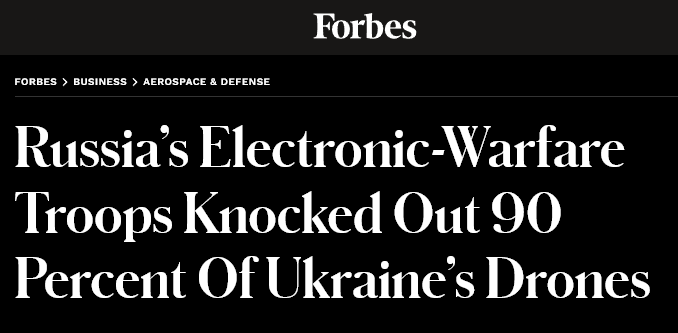

In fact, after nearly three months of 24/7 bombing, as can be seen in the chart posted earlier, NATO managed to destroy only a few dozen pieces of heavy weapons like tanks, IFV’s, and artillery.
Meanwhile, according to the Russian MOD, the tally of destroyed Ukrainian equipment thus far in the war is nearly 23,000 total ground based weapons systems:
Compare that to the 46 total Serb units destroyed by NATO.
Also, while on that topic, the US airforce is widely lauded for its near flawless operations in the Iraq War, against a country which had no manpads, and hardly any real anti-air systems, lest you count the inaccurate old WW2 flak cannon style munitions we saw lightup the Baghdad skies, with the dazzling but ineffective trails of tracer fire.
Western critics of Russia’s SMO claim that Russia’s airforce is inept, and is suffering outsized losses against what is a near-peer foe, after only a few dozen total air assets have been lost. However, they’re quick to ignore that when the US last faced an actual recalcitrant and determined adversary (read: one that wasn’t bribed off to lay down and take a dive) in Vietnam, the US’s air losses were unprecedented and to this day without match.
As can be seen in the official wiki entry for the war above, the US lost 10,000 aircraft. And together with allies a combined 12,500 aircraft. And this is against a foe that can’t even rightly be deemed a ‘near-peer’ adversary. At the current rate, Russia could fight the near-peer Ukrainian forces for decades and not suffer anywhere close to those air losses.
The big question is, what changed? Did the US become a magically competent force, going from a head-spinning 10,000 aircraft lost to merely dozens in Iraq in the course of a couple decades? No, of course not. The simple explanation is, the Iraq War was a fake hologram war, against an opponent paid to put on a pretend show for the global Military-Industrial-Media-Complex.
In the end, as the counterfeit triumphs of the Iraq War continue spiraling down the memory-hole drain, leaving only the hand-selected dregs for the narrative makers to sift through, Russian military achievements will undoubtedly face ever-increasingly disingenuous comparisons. Despite a fraudulently deceptive war, where the demoralized and bought-off adversary was never even in the fight to begin with, the US’s achievement still holds its sheen, and our oral histories won’t cease treating the war as having set the bar—the golden standard for the modern military campaign.
Meanwhile, Russia, which fights a real war, against a real adversary—highly motivated by the unprecedented deluge of arms and funding—will continue to have its valor turned to gibes, and its own achievements tarnished as the butt of mocking comparisons. But it’s no different to eras past—the co-opted valor of WW2, for example—by which they still undertake to mar Russia’s victories in any way they can.
But those of us who know the truth won’t let it die, and the Russian SMO will tell its own tale to those with ears to listen. The Russian Armed Forces have never needed their glory sung by others; it will be self-evident, as always, to those with sight undimmed by prejudice and hate—rather than relying on a veil of cheap, theatrical pomp and stagecraft.


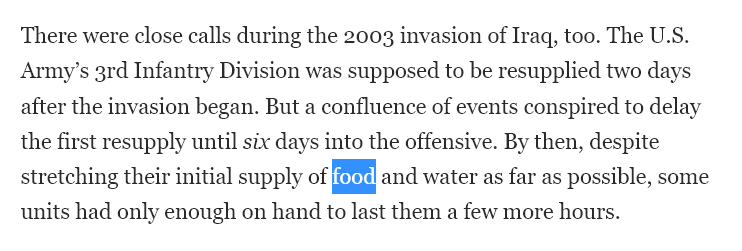


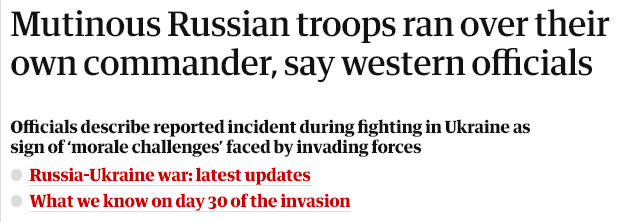
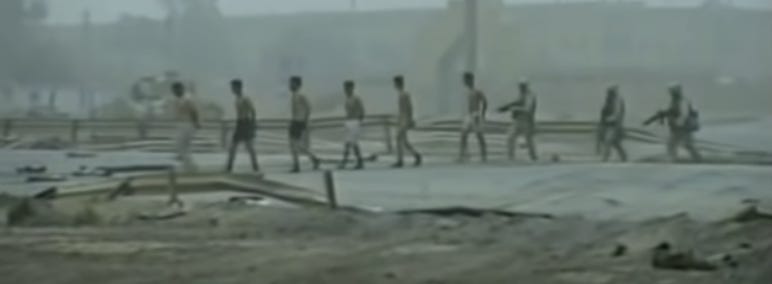
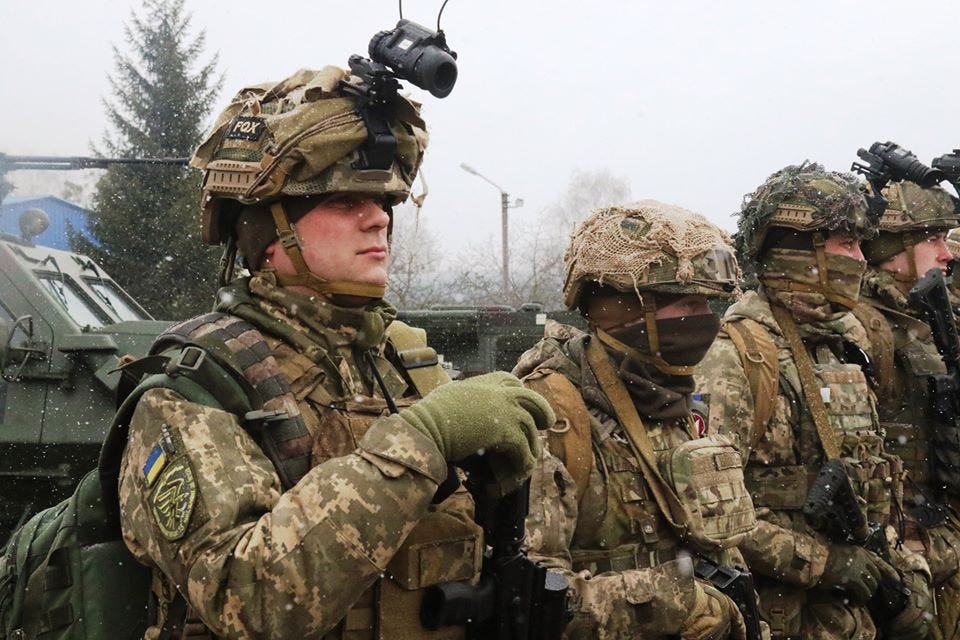
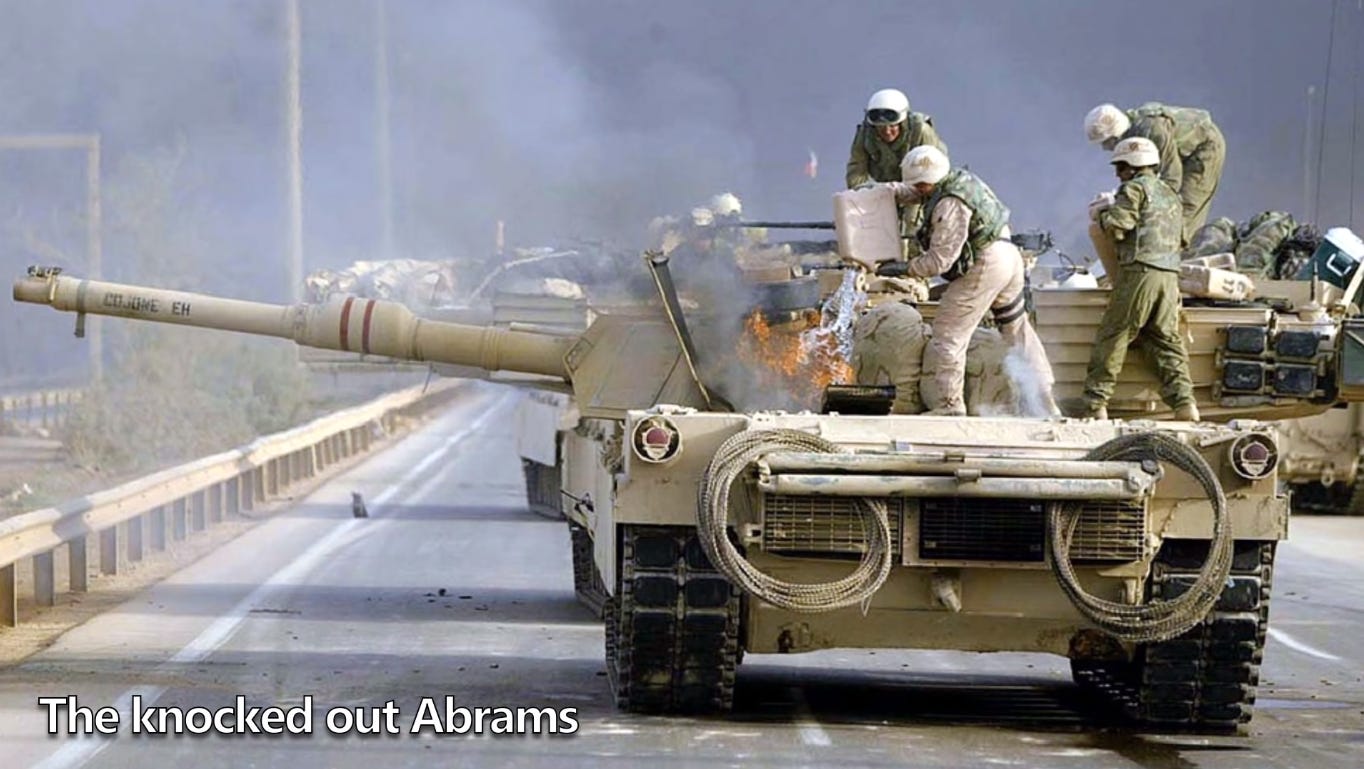
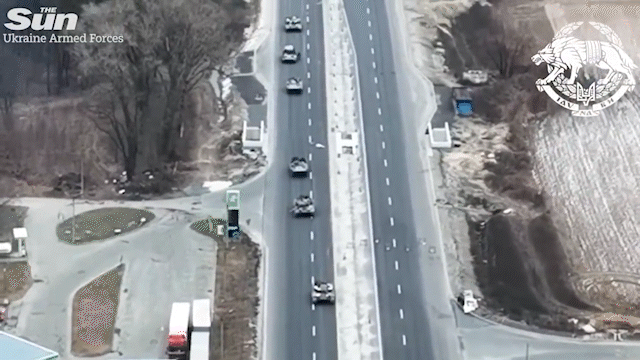
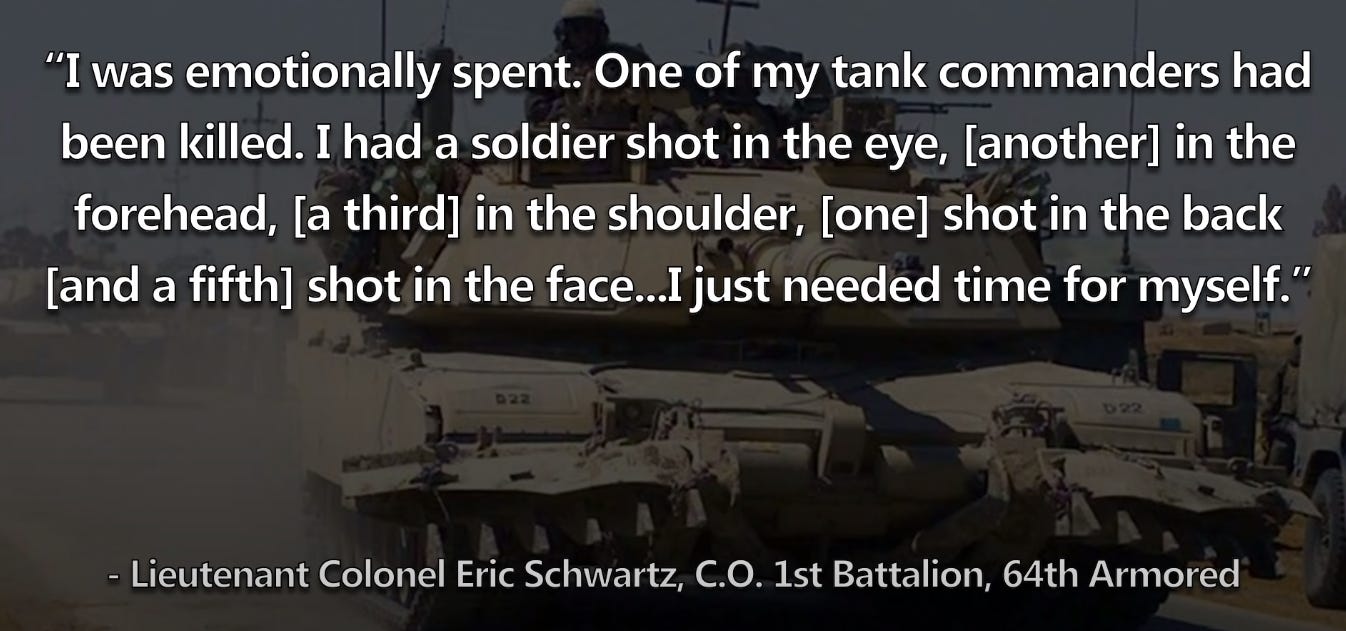
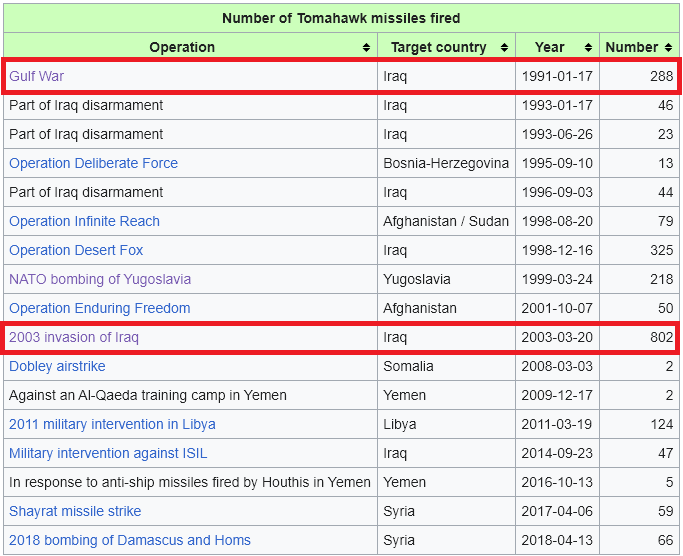
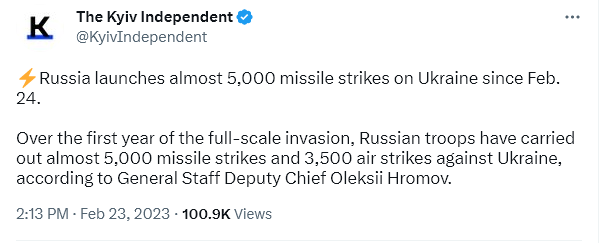
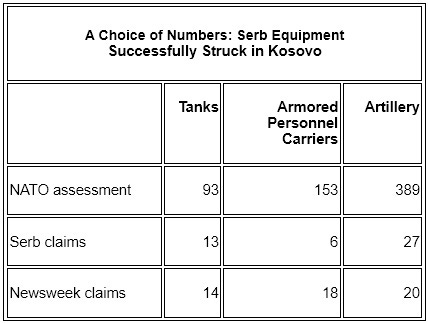


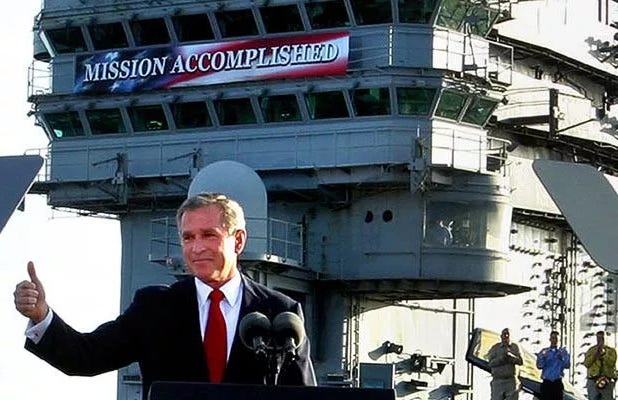
No comments:
Post a Comment